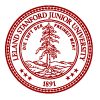A physically motivated room reverberation enhancement system that is stable in any (dissipative) room: An application of sound portholes
| Title | A physically motivated room reverberation enhancement system that is stable in any (dissipative) room: An application of sound portholes |
| Publication Type | Conference Proceedings |
| Year of Conference | 2010 |
| Authors | Berdahl, E., G. Niemeyer, and J. O. Smith III |
| Conference Name | NOISE-CON 2010 in conjunction ith the 159th Meeting of the Acoustical Society of America |
| Date Published | 04/2010 |
| Conference Location | Baltimore, MD |
| Abstract | Prior active room reverberation enhancement systems have typically employed microphones, artificial reverberator filters, and loudspeakers to change the reverberant properties of a room. However, acoustic feedback from the loudspeakers to the microphones has had the potential to drive such systems unstable. To avoid feedback instabilities, we apply passivity techniques from control theory to design a stable room reverberation enhancement system from the ground up. In particular, we employ sound portholes, which are special transducers that operate concurrently as microphones and loudspeakers. With these sound portholes, the feedback controller implements a passive connection to virtual acoustic spaces, which are realized using digital waveguide networks. Because the feedback controller models a passive system, it is theoretically stable in any (dissipative) acoustic environment and for arbitrarily large loop gains. As a consequence, the system does not suffer from “ringing tones” at high loop gains in the same way as prior systems have suffered. Furthermore, the system does not need to be re-calibrated if the properties of the room change or even if moved to a whole new room. This method for designing room reverberation enhancement systems may generally result in more realistic reverberant sound because it implements the acoustical features of a system that could exist naturally in the physical world. |
| URL | https://ccrma.stanford.edu/~eberdahl/Papers/NOISECON2010Reverb.pdf |

